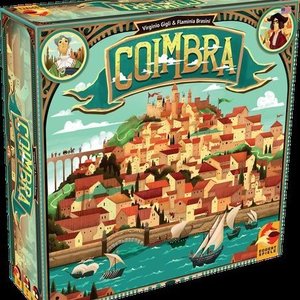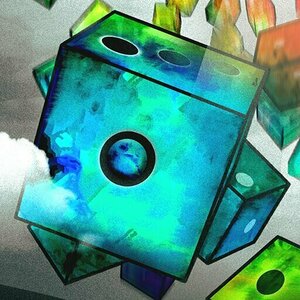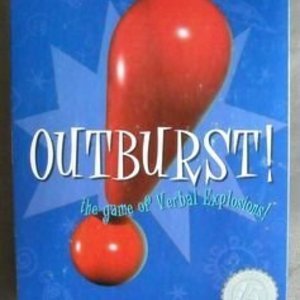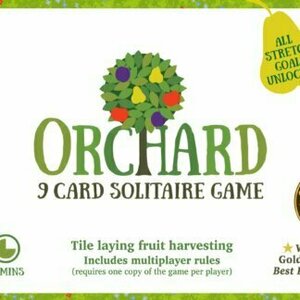Search
Search results
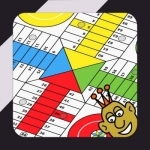
El Parchís
Games
App
Parchís is one of the most popular board games in Spain. It is an adaptation of the Indian game...
Rebecca Hope (5 KP) rated The Island of El Dorado in Tabletop Games
Aug 11, 2018
Great table top game
I thought this game was quite enjoyable. I am not personally the greatest fan of strategy-based games, and the dice-rolling adds an element of luck to the game that I thought made the game more fun. Easy enough game to learn, I think new players could pick it up relatively quick. Good choice in game to learn.
The Marinated Meeple (1853 KP) rated Coimbra in Tabletop Games
Jan 14, 2020
Great use of Dice to set the parameters of the turn (3 more)
Not Luck Based
lots of push and pull, this affects that....
relatively quick if players play.... each action is quick...
Finally got around to it, it's great!
I've played it twice so far, back to back games, cause we were anxious to do better in the 2nd game... it's great so far.
Rachael Haverstick (24 KP) rated Random Dice in Apps
Dec 11, 2020
Random Dice is a PVP deck building game. You gain what is called SP to level up your die as you face head-to-head or combine forces and reach the highest level you can make. I definitely didn't think I would like it when I first started seeing ads for it, but I now play it obsessively. Great game!

Light
Book
On the barren surface of an asteroid, located deep in the galaxy beneath the unbearable light of the...

Dungeons and Dragons
Tabletop Game
Dungeons & Dragons is a fantasy tabletop role-playing game originally designed by Gary Gygax and...
Purple Phoenix Games (2266 KP) rated Orchard: A 9 Card Solitaire Game in Tabletop Games
Mar 1, 2022
I love playing games with other people. Absolutely LOVE it. However, I also love playing games solo as well. When a game comes along that is specifically designed for solo play only, I tend to like them more than multiplayer games that include a solo mode. Also included here are cooperative games where the solo player just quarterbacks multiple players. But a game that is designed for solo play and even includes it in its title? I cannot recall many games I have played like this. But how is this one?
Orchard: A 9 Card Solitaire Game (simply Orchard from here on out) is a solo game where the player is attempting to harvest the most fruit from trees that are bred for high yield. As there are no players to play against, the player will instead compare their ending score with a table in the rulebook. Will the player’s game result in a “Pal-tree” score or will they score enough to be considered “Almost imposs-apple!”?
To setup, place the dice and Rotten Fruiteeple on the table. Shuffle the 18 cards, deal two decks of nine cards (two games worth), and choose a deck to play. Flip the first card over to start the orchard, shuffle the remaining cards and draw two into hand. The game is now setup and ready to begin!
Turns in Orchard could not be simpler: Play a Card, Place Dice, Draw a Card. From the two-card hand, choose one to be placed in the orchard with one very important rule: the newly-placed card must overlap another card in the orchard by overlapping matching tree types. So, a card can only be placed if the apple tree overlaps an apple tree, etc. More than one icon may overlap the existing card, but each icon must match types below it.
Once the new card has been placed, for each icon overlapped, a die matching the fruit type is placed on the icon. If this is the first time the tree has been overlapped, the die face is placed with value 1 showing. However, the die will increase in value each subsequent time it is overlapped (total die values of 1, 3, 6, 10). Therefore, when a card has been overlapped four times on the same icon, the maximum number of points has been reached for that icon. Should a player wish instead to forego any die placement and be unable (or unwilling) to place a card correctly, they may place any card, overlap an icon, and then add a Rotten Fruiteeple atop the mismatched icon. This spoils the fruit for the remainder of the game, so no further dice may be placed upon it, and also reduces the final score by three VP at game end for each token placed.
Finally, when the card and die have been placed, the player draws another card into their hand. When the final card has been played, or no further legal placements can be made, the game ends and the player totals up the dice values to arrive at their final score.
Components. This game is 18 cards of good quality, a bunch of custom dice, and two Rotten Fruit meeples. Everything is good quality and size, and it fits into a really cool sliding deck-box. The art, for me, is fine. The colors match fruits from the real world, and the dice match those color well enough too. I feel like different fruit choices could have been made to increase accessibility for our color-blind gamer friends. The plums and apples are both small and round (with an ever-so-slight different shape on the apple). I don’t know what other fruits would have been more appropriate – I’m not a botanist. Similarly, the dice are custom made with the pips looking like a plum or apple, and two sides of the dice showing a leaf icon. Perhaps in the interest of differentiation, instead of the leaves, the different dice colors could instead show the matching fruit style (if only the plum and apple looked differently enough). So instead of leaves, the red dice could show apples, the yellow dice could show pears, and the purple dice could show, I don’t know, eggplants? I am not color-blind, so these do not affect me, but it is something I have taken to commenting on as I review more and more games.
All in all, Orchard is a really good little game of overlapping and puzzling out next moves. The games are super-quick and engaging, and I always want to improve my score each time I play. When a game forces me to play again and again I feel it is a sign of a good game. I have plans to keep this one in its own special place where I can just grab it and go, instead of being dwarfed by my collection of much larger game boxes. If you are like me and pine for good solo play, then perhaps you should check out Orchard: A 9 Card Solitaire Game. The rules are light, game play is simple and fast, and it keeps drawing me in every time I look at the box.
Also let me know your highest score because I apparently am trash at this game, even though I really enjoy playing it. Have you scored in the top tier? Those must be some delicious fruits.
Orchard: A 9 Card Solitaire Game (simply Orchard from here on out) is a solo game where the player is attempting to harvest the most fruit from trees that are bred for high yield. As there are no players to play against, the player will instead compare their ending score with a table in the rulebook. Will the player’s game result in a “Pal-tree” score or will they score enough to be considered “Almost imposs-apple!”?
To setup, place the dice and Rotten Fruiteeple on the table. Shuffle the 18 cards, deal two decks of nine cards (two games worth), and choose a deck to play. Flip the first card over to start the orchard, shuffle the remaining cards and draw two into hand. The game is now setup and ready to begin!
Turns in Orchard could not be simpler: Play a Card, Place Dice, Draw a Card. From the two-card hand, choose one to be placed in the orchard with one very important rule: the newly-placed card must overlap another card in the orchard by overlapping matching tree types. So, a card can only be placed if the apple tree overlaps an apple tree, etc. More than one icon may overlap the existing card, but each icon must match types below it.
Once the new card has been placed, for each icon overlapped, a die matching the fruit type is placed on the icon. If this is the first time the tree has been overlapped, the die face is placed with value 1 showing. However, the die will increase in value each subsequent time it is overlapped (total die values of 1, 3, 6, 10). Therefore, when a card has been overlapped four times on the same icon, the maximum number of points has been reached for that icon. Should a player wish instead to forego any die placement and be unable (or unwilling) to place a card correctly, they may place any card, overlap an icon, and then add a Rotten Fruiteeple atop the mismatched icon. This spoils the fruit for the remainder of the game, so no further dice may be placed upon it, and also reduces the final score by three VP at game end for each token placed.
Finally, when the card and die have been placed, the player draws another card into their hand. When the final card has been played, or no further legal placements can be made, the game ends and the player totals up the dice values to arrive at their final score.
Components. This game is 18 cards of good quality, a bunch of custom dice, and two Rotten Fruit meeples. Everything is good quality and size, and it fits into a really cool sliding deck-box. The art, for me, is fine. The colors match fruits from the real world, and the dice match those color well enough too. I feel like different fruit choices could have been made to increase accessibility for our color-blind gamer friends. The plums and apples are both small and round (with an ever-so-slight different shape on the apple). I don’t know what other fruits would have been more appropriate – I’m not a botanist. Similarly, the dice are custom made with the pips looking like a plum or apple, and two sides of the dice showing a leaf icon. Perhaps in the interest of differentiation, instead of the leaves, the different dice colors could instead show the matching fruit style (if only the plum and apple looked differently enough). So instead of leaves, the red dice could show apples, the yellow dice could show pears, and the purple dice could show, I don’t know, eggplants? I am not color-blind, so these do not affect me, but it is something I have taken to commenting on as I review more and more games.
All in all, Orchard is a really good little game of overlapping and puzzling out next moves. The games are super-quick and engaging, and I always want to improve my score each time I play. When a game forces me to play again and again I feel it is a sign of a good game. I have plans to keep this one in its own special place where I can just grab it and go, instead of being dwarfed by my collection of much larger game boxes. If you are like me and pine for good solo play, then perhaps you should check out Orchard: A 9 Card Solitaire Game. The rules are light, game play is simple and fast, and it keeps drawing me in every time I look at the box.
Also let me know your highest score because I apparently am trash at this game, even though I really enjoy playing it. Have you scored in the top tier? Those must be some delicious fruits.
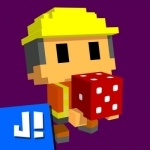
JiPPO! Street
Games, Entertainment and Stickers
App
Emoji speaking characters? Check. Awesome blocky graphics?! Check! Simple & fun gameplay?!? CHECK!!!...

